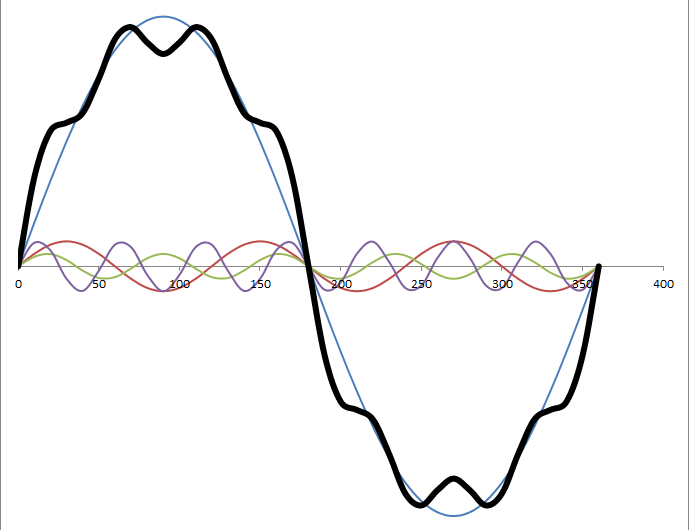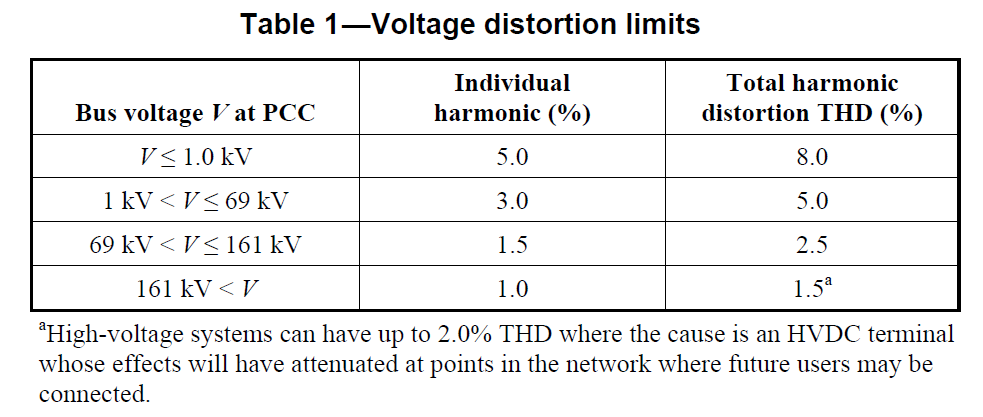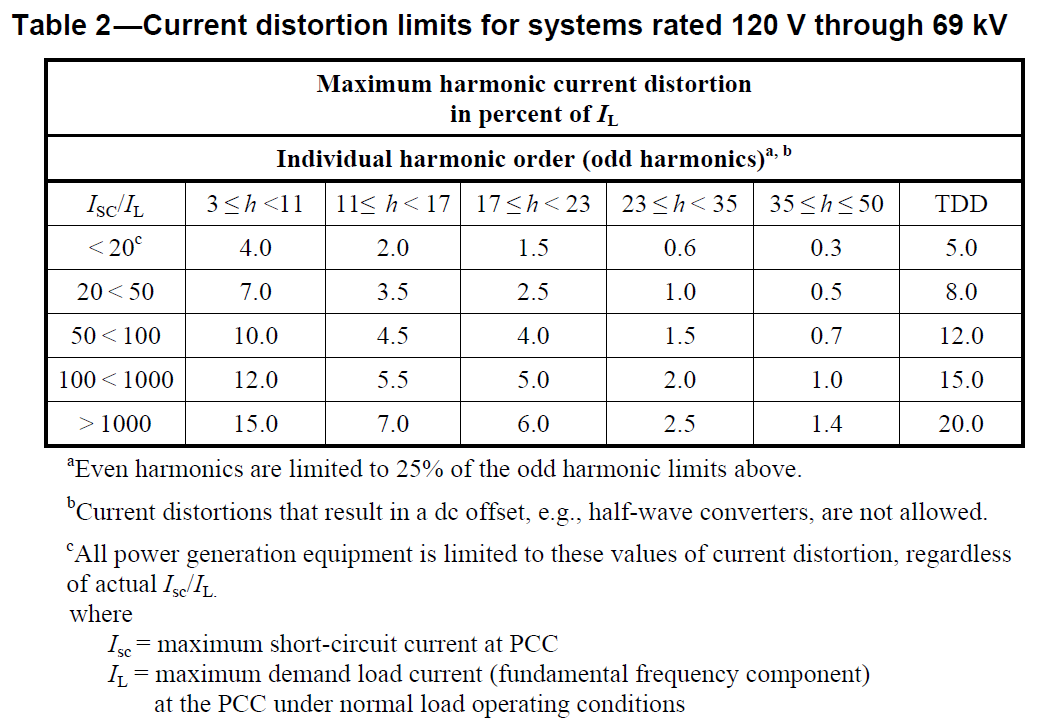I have written several articles about the effects of harmonics and its mitigation. Another question that may pop up is, what is the allowable harmonic content at the point of connection of a user's system. The point of connection is also known as the point of common coupling in international standards.
I. Definition of Terms
Note: The following terms are extracts from the Philippine Distribution Code (2001) and IEEE Std 519-2014.
- Harmonics
- Sinusoidal voltages and currents having Frequencies that are integral multiples of the fundamental Frequency.
- point of common coupling (PCC)
- Point on a public power supply system, electrically nearest to a particular load, at which other loads are, or could be, connected. The PCC is a point located upstream of the considered installation.
- Power Quality
- The quality of the voltage, including its frequency and resulting current, that are measured in the Grid, Distribution System, or any User System.
- Total Demand Distortion (TDD)
- The ratio of the root-mean-square value of the harmonic content to the root-mean-square value of the rated or maximum fundamental quantity, expressed in percent.
- Total Harmonic Distortion (THD)
- The ratio of the root-mean-square value of the harmonic content to the root-mean-square value of the fundamental quantity, expressed in percent.
- The ratio of the root mean square of the harmonic content, considering harmonic components up to the 50th order and specifically excluding interharmonics, expressed as a percent of the fundamental.
II. Power Quality Problems
The Philippine Distribution Code (2001) is explicit on what the conditions do power quality problems exist in a power system. To quote
3.2.1.2 A Power Quality problem exists when at least one of the following conditions is present and significantly affects the normal operation of the System:
(a) The System Frequency has deviated from the nominal value of 60 Hz;
(b) Voltage magnitudes are outside their allowable range of variation;
(c) Harmonic Frequencies are present in the System;
(d) There is an imbalance in the magnitude of the phase voltages;
(e) The phase displacement between the voltages is not equal to 120 degrees;
(f) Voltage fluctuations cause Flicker that is outside the allowable Flicker Severity limits; or
(g) High-frequency Overvoltages are present in the Distribution System.
As per the above section of the Philippine Distribution Code (2001), harmonics is listed as one of the many causes of power quality problems.
III. Allowable Harmonics in Philippines
The allowable harmonics as provided by the Philippine Distribution Code (2001) are specified in the following sections
3.2.4.4 At any User System, the THD of the voltage shall not exceed five percent (5%) during normal operating conditions.
3.2.4.5 At any User System, the TDD of the current shall not exceed five percent (5%) during normal operating conditions.
An article on Inverter Topologies – Variable Speed Drives provides detailed explanation on the causes of current or voltage distortion.
IV. Allowable Harmonics (International Standards)
Managing harmonics in a power system is considered a joint responsibility involving both end-users and system owners or operators. Harmonic limits are recommended for both voltages and currents. The recommended values as per IEEE Std 519-2014 are based on the fact that some level of voltage distortion is generally acceptable and both system owners or operators and users must work cooperatively to keep actual voltage distortion below objectionable levels.


